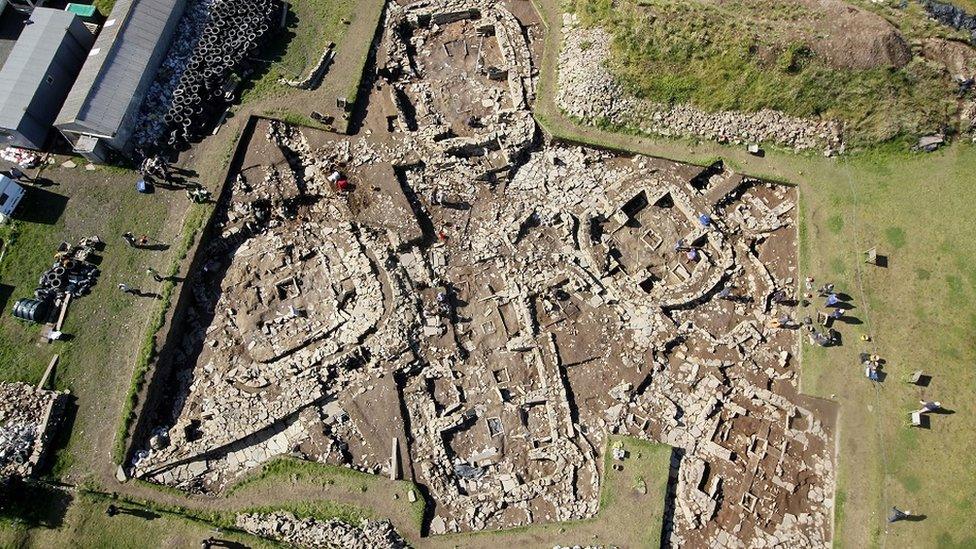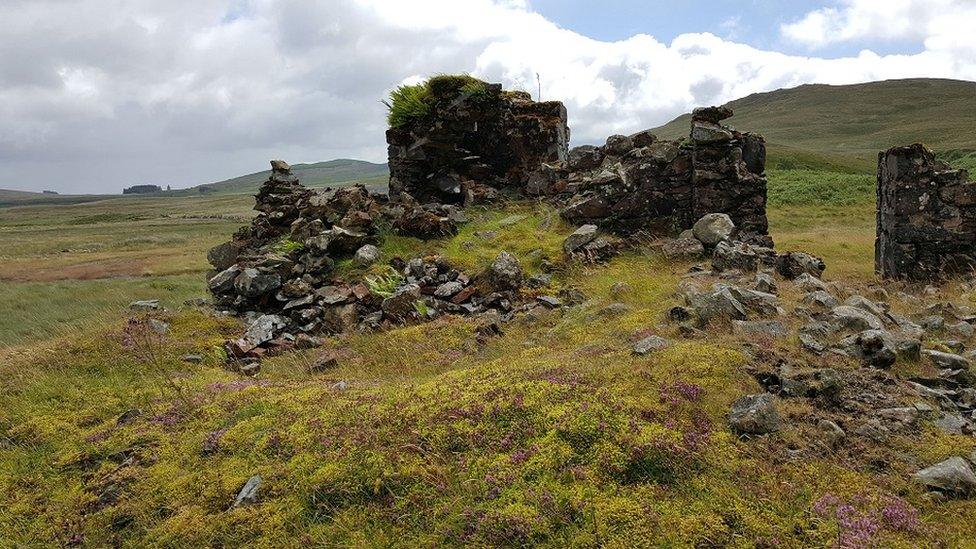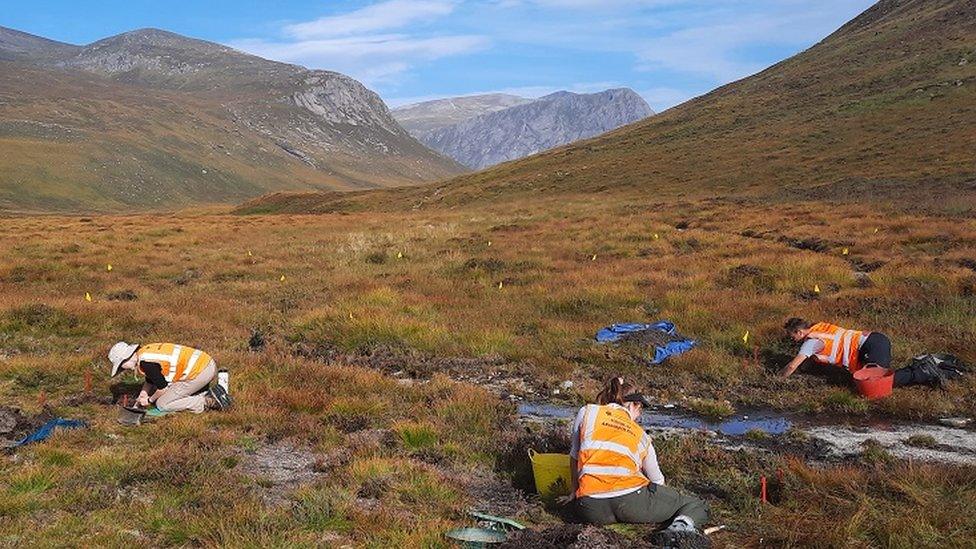Orkney and Galloway locations in archaeologists' sights
- Published

The entire Ness of Brodgar settlement will be open for the first time since 2019
Some of Scotland's major archaeological sites are to be fully open for the first time in two years this summer.
The Covid pandemic had prevented public involvement at many of the places.
In Orkney, the entire 5,000-year-old Neolithic Ness of Brodgar settlement will be open with a full-sized dig team on-site for the first time since 2019.
In Dumfries and Galloway, volunteers have been sought for a survey of the ruins of what is described as an industrial ghost town.
Woodhead Lead Mine village, near Carsphairn, was built in the 1830s and had a school and library.
Lead was mined and smelted at the site until the 1870s.
The Society of Antiquaries of Scotland's Dig It! project will be gathering details on the archaeological finds made at locations across Scotland.

Ruins at Woodhead Lead Mine
Now into its fourth year, Dig It! celebrates excavations and other fieldwork taking place between 21 June and 22 September.
Over the coming weeks, experts will also be returning to Skaill Farmstead on Rousay where a large Norse hall, probably dating to the 10th to 12th centuries AD, was discovered beneath more recent structures in 2019.
A test pit is also to be dug near prehistoric rock art around Kirkcudbright to find out if any artefacts lie below the surface.
The stone carvings date back several millennia to the Neolithic period, and what they represent remains a mystery.

Archaeologists in the Cairngorms
In Fife, volunteers will help to excavate medieval religious sites in Inverkeithing and Saline.
The public will also be able to watch experts from University College Dublin working at Sgòr an Eòin in Glen Dee on Mar Lodge Estate in Aberdeenshire as they search for more artefacts relating to hunter-gatherers who lived there more than 6,000 years ago.
Scotland was home to hunter-gatherers from about 10,000 years ago, after the end of the last ice age.
Mesolithic sites are rare and have mainly been found on the coast and a few inland areas.
Only a handful of upland sites have been discovered in the Cairngorms so far - Chest of Dee, Caochanan Ruadha and Sgòr an Eòin.